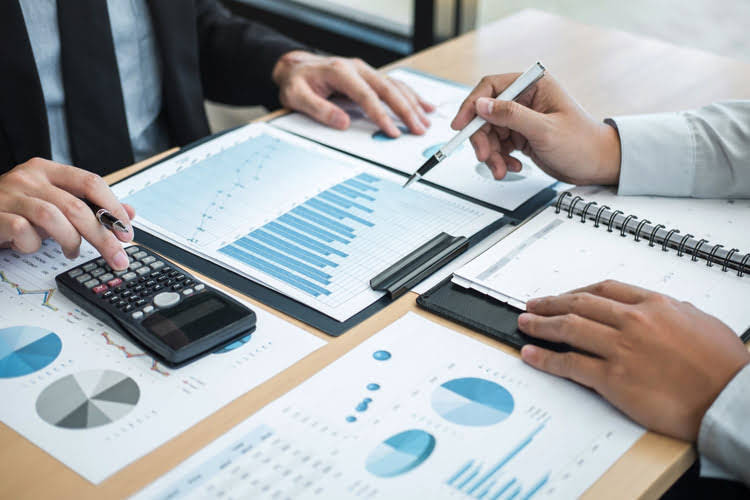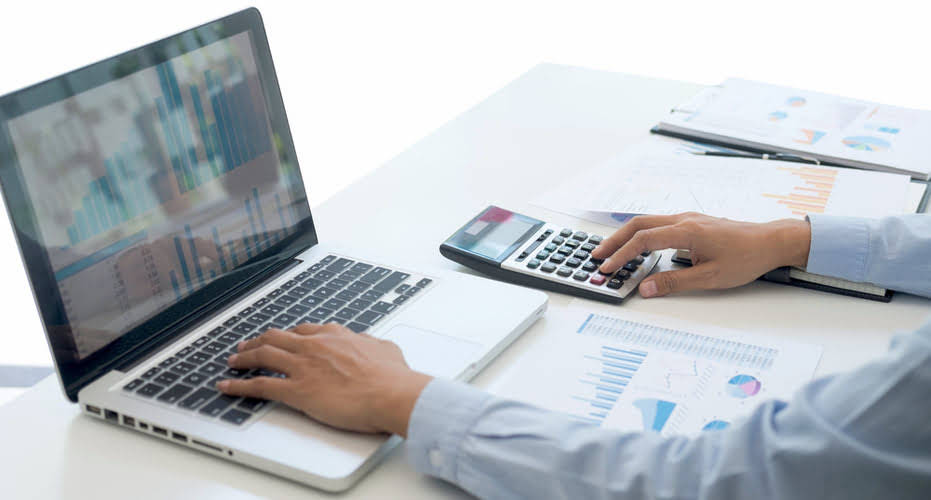Content

Both investors and creditors look at the current assets of a company to gauge the value and risk involved in doing business with the company. They typically use liquidity ratios to compare the assets with liabilities and other obligations of the company. Some common ratios are thecurrent ratio,cash ratio, andacid test ratio.
- Noodle’s negative working capital balance could be good, bad or something in between.
- The balance sheet organizes assets and liabilities in order of liquidity (i.e. current vs long term), making it very easy to identify and calculate working capital .
- Under IFRS items are always shown based on liquidity from the least liquid assets at the top, usually land and buildings to the most liquid, i.e. cash.
- It helps in determining liquidity position by forming part of various ratios which in turn evaluates the risk involved in an operation and its value.
- We can see that Noodles & Co has a very short cash conversion cycle – less than 3 days.
With a uniform listing criterion established by an accounting GAAP, it becomes easier for various stakeholders to understand, analyze the company’s balance sheet and make decisions accordingly. This increases both intra-company and inter-company balance sheet comparability. Liquidity order listing gives impressions about various liabilities repayment capacity of a company like loan instalments, debentures redemption, or any other short term liability like payment to vendors, etc.
What Are Negative Inventory Turns?
Cash, accounts receivable, inventories and accounts payable are often discussed together because they represent the moving parts involved in a company’s operating cycle . Guidelines for balance sheets of public business entities are given by the International Accounting Standards Board and numerous country-specific organizations/companies. The Federal Accounting Standards Advisory Board is a United States federal advisory committee whose mission is to develop generally accepted accounting principles for federal financial reporting entities. Generally, we list assets in order of liquidity, or how quickly they will be converted into cash. The company also has long-term debt and shareholder equity of $1,000.
Prepare a classified balance sheet; assume that $28,600 of the note payable will be paid in 2021. (List Current Assets in order of liquidity. https://t.co/A0qylRPaXe
— gradesguaranteed21 (@gradesguarante1) July 28, 2021
When companies create important financial reports, such as a balance sheet, it can be important to list their assets in order of liquidity. In this article, we discuss what liquidity is, what the order of liquidity is and answer other frequently asked questions about ordering the liquidity of company assets. A receivable represents a sale that has already taken place; now you’re just waiting for the customer to settle up. You’re a lot closer to cash with a receivable than you are with an item sitting in your inventory.
Stay Up To Date On The Latest Accounting Tips And Training
You generally list fixed assets on your balance sheet as property or equipment. Order of liquidity is the presentation of assets in the balance sheet in the order of the amount of time it would usually take to convert them into cash.
For example, imagine the appliance retailer ordered too much inventory – its cash will be tied up and unavailable for spending on other things . Moreover, it will need larger warehouses, will have to pay for unnecessary storage, and will have no space to house other inventory.
For example, a store that sells collectable stamps might hang onto its inventory to find just the right buyer to get the best price, which means those stamps are not very liquid. But if that same stamp store owns any stocks or bonds, those can be sold quickly, so those investments would be considered liquid. The current assets are clearly separated and listed in the order of liquidity.

Along with fixed assets, such as plant and equipment, working capital is considered a part of operating capital. The current ratio, which is the simplest measure and is calculated by dividing the total current assets by the total current liabilities. However, some current assets are more difficult to sell at full value in a hurry. For a corporation with a published balance sheet there are various ratios used to calculate a measure of liquidity, namely the current ratio, the quick ratio, the operating cash flow ratio, and the liquidity ratio .
Current Assets Template
Because fixed assets are long-term assets, they usually depreciate over time. Current assets typically don’t depreciate because they are short-term. “Total current liabilities” is the sum of accounts payable, accrued liabilities and taxes. “Total long-term assets” is the sum of capital and plant, investments, and miscellaneous assets. One of the important steps in the accounting cycle when preparing financial statements is the adjusted trial balance.
- Prepaid expenses are exactly what they sound like—expenses that have been paid before they were consumed.
- They are considered as long-term or long-living assets as the Company utilizes them for over a year.
- Not all balance sheets use a left-right or double-entry accounting formation.
- For example, a car dealership is in the business of reselling cars.
- As you study about the assets, liabilities, and stockholders’ equity contained in a balance sheet, you will understand why this financial statement provides information about the solvency of the business.
On a balance sheet, the value of inventory is the cost required to replace it if the inventory were destroyed, lost, or damaged. Inventory includes goods ready for sale, as well as raw material and partially completed products that will be for sale when they are completed. The balance sheet contains statements of assets, liabilities, and shareholders’ equity. The balance sheet is sometimes called the statement of financial position. Current assets are all assets that a company expects to convert to cash within one year.
What Is Liquidity?
The dividend pay-out ratio helps investors to determine dividend payments by the company. Similarly, different stakeholders use the asset information for their analysis.
The above example also shows how it’s laid out and how the two sides of the balance sheet balance each other out. Get instant access to video lessons taught by experienced investment bankers. Learn financial statement modeling, DCF, M&A, LBO, Comps and Excel shortcuts. At the risk of stating the obvious, that’s because cash is the very thing the cash flow statement is trying to solve for. The section above is meant to describe the the moving parts that make up working capital and highlights why these items are often described together as working capital.
How do you list current assets in order of liquidity?
Order of liquidity is the presentation of assets in the balance sheet in the order of the amount of time it would usually take to convert them into cash. Thus, cash is always presented first, followed by marketable securities, then accounts receivable, then inventory, and then fixed assets. Goodwill is listed last.
Liabilities are the debts owed by a business, often incurred to fund its operation. It is a measure of how dependent a company is on borrowing rather than equity. Working capital simply shows whether a company is making or losing money, and is used by lenders to evaluate whether a company can survive hard times. Loan agreements often specify how much working capital the borrower must maintain. GoCardless is authorised by the Financial Conduct Authority under the Payment Services Regulations 2017, registration number , for the provision of payment services. Learn more about how you can improve payment processing at your business today. Liquidity order helps in times of emergencies by providing quick funds to overcome the scenario that is being faced by the organization.
Some Inventory May Not Provide Liquidity
Finding more and new ways to hold onto and generate cash is a constant search for most businesses. Think about ways to cut costs, such as paying invoices on time to avoid late fees, holding off on making capital expenditures and working with suppliers to find the most cost-efficient payment terms. Try using long-term financing instead of short-term to improve your liquidity ratio and free up cash to invest back in your business or pay off liabilities. Liquidity is a measure of a company’s ability to pay off its short-term liabilities—those that will come due in less than a year. It’s usually shown as a ratio or a percentage of what the company owes against what it owns. These measures can give you a glimpse into the financial health of the business. Liz knows that her company is doing fine and that the bank merely keeps these levels as a protective measure.

These include dividend payments, the sale or repurchase of stock, profit or loss changes. If a company is public, public accountants must look over balance sheets and perform external audits. Furthermore, public companies have to prepare their balance sheets by following the GAAP. Public balance sheets have to be filed regularly with the SEC, too. Your small business balance sheet gives insight on many aspects of your business, including your business’s assets. To better understand your business’s financial health, it’s important to keep track of your assets.
How Can Business Owners Analyze Their Liquidity?
For example, it might be a good time to invest in updated equipment for greater productivity. Cash and cash equivalents are the most liquid, followed by short-term investments, etc. The total current assets for Walmart for the period ending January 31, 2017, is simply the addition of all the relevant assets ($57,689,000). Accounts receivable—which is the money due to a company for goods or services delivered or used but not yet paid for by customers—are considered current assets as long as they can be expected to be paid within a year. If a business is making sales by offering longer terms of credit to its customers, a portion of its accounts receivables may not qualify for inclusion in current assets. Measures the capability of the cash generation capability of any asset. It gives an idea about the dividends that are going to be received by the shareholders.
Overstating current assets can mislead investors and creditors who depend on this information to make decisions about the company. Prepaid expenses are exactly what they sound like—expenses that have been paid before they were consumed. A six-month insurance policy is usually paid for up front even though the insurance isn’t used for another six months. Even though these assets will not actually be converted into cash, they will be consumed in the current period. Management isn’t the only one interested in this category of assets, however. Investors and creditors use several differentliquidity ratiosto analyze the liquidity of the company before they invest in or lend to it.
If these are overstated, it misleads the investors and creditors who rely on the information and make decisions regarding the company. The Cash Ratio is a liquidity ratio used to measure a company’s ability to meet short-term liabilities.
We can see that Noodles & Co has a very short cash conversion cycle – less than 3 days. It takes roughly 30 days to convert inventory to cash, and Noodles buys inventory on credit and has about 30 days to pay. This explains the company’s negative working capital balance and relatively limited need for short term liquidity.
- Depending on the nature of the business and the products it markets, current assets can range from barrels of crude oil, fabricated goods, works in progress inventory, raw materials, or foreign currency.
- There are many different assets that can be included in this category, but I will only discuss the most common ones.
- A ratio of 1 or more indicates enough cash to cover current liabilities.
- When it comes to liquidity and the health of the business, it’s important to review it frequently so as not to miss out on opportunities for improvement.
- Accounts receivable is essentially a short-term loan to customers and vendors who purchase goods on account.
- On a balance sheet, assets will typically be classified into current assets and non-current (long-term) assets.
The current ratio is a liquidity ratio that measures a company’s ability to cover its short-term obligations with its current assets. Current assets represent all the assets of a company that are expected to be conveniently sold, consumed, used, or exhausted through standard business operations with one year. Current assets appear on a company’s balance sheet, one of the required financial statements that must be completed each year. The answer to this question differs from business to business, however, it can order of liquidity be very helpful for companies to have a healthy balance between each of their assets. Accounts receivable are payments that clients and consumers owe a company or organization for their goods and services. Most often, businesses will give accounts receivable to clients as an invoice and allow them to pay the invoice through the company’s credit terms. This means that it might take clients some time to pay the account in full, so the company can’t always rely on accounts receivable for a quick cash conversion.

Accounting Crash Course Used at top investment banks and universities. Get up to speed on the income statement, balance sheet, cash flow statement and more. These ratios are also a way to benchmark against other companies in your industry and set goals to maintain or reach financial objectives.
As an illustration, consider this snapshot of Wal-Mart’s balance sheet at the end of the last fiscal year. Attributing preferred shares to one or the other is partially a subjective decision. If a company’s functional currency is the U.S. dollar, then any balances denominated in the local or foreign currency, must be re-measured. Liabilities are arranged on the balance sheet in order of how soon they must be repaid. Balance sheets are usually prepared at the close of an accounting period, such as month-end, quarter-end, or year-end. A company’s equity represents retained earnings and funds contributed by its shareholders.
Liquids Assets: Definition, Examples, Importance – Business Insider
Liquids Assets: Definition, Examples, Importance.
Posted: Thu, 21 Oct 2021 07:00:00 GMT [source]
A ratio of 1 or more indicates enough cash to cover current liabilities. Current assets can help you determine the financial health of a business. Here’s how to calculate them, and what to do with this information.
Afghan situation can be averted if US releases Kabul’s assets: Imran Khan – Devdiscourse
Afghan situation can be averted if US releases Kabul’s assets: Imran Khan.
Posted: Wed, 22 Dec 2021 06:51:56 GMT [source]
Depreciation subtracts a specified amount from the original purchase price for the wear and tear on the asset. A balance sheet communicates the state of your business to you and to others, and is key in business valuation and assessing the financial health of your company. The balance sheet uses a standard accounting format showing the same categories of assets and liabilities no matter the size or type of business.
Adjustments are sometimes also made, for example, to exclude intangible assets, and this will affect the formal equity; debt to equity will therefore also be affected. Cash and cash equivalents are the most liquid assets found within the asset portion of a company’s balance sheet. Cash equivalents are assets that are readily convertible into cash, such as money market holdings, short-term government bonds or treasury bills, marketable securities and commercial papers. The balance sheet is a formal document that follows a standard accounting format showing the same categories of assets and liabilities regardless of the size or nature of the business.



Amazing post you have published here.
ยูฟ่าเบทเว็บตรง
Good article I liked it.
สมัครเว็บUFABETครบวงจร
Good article I liked it.
That’s nice. It was a fine article.
UFABETบนมือถือ
Good article I liked it.
เว็บพนันยูฟ่าเบท
Good article I liked it.
เว็บUFABETเว็บหลักยอดนิยม
That’s nice. It was a fine article.
บอลออนไลน์
That’s nice. It was a fine article.
คาสิโน
Good article I liked it.
ไพ่บาคาร่าเว็บตรง
Good article I liked it.
เว็บพนันบอลออนไลน์ดีที่สุด
That’s nice. It was a fine article.
แทงบอลออนไลน์
Wow It is a great contents
แทงบอลออนไลน์
เว็บแทงบอลออนไลน์
เว็บแทงบอลออนไลน์
That’s nice. It was a fine article.
แทงบอลเต็ง
บอลเต็ง
สมัครแทงบอล
Awesome post. It’s so good to see very good information
BIG GAMING
BG Casino
Casino239
Good article I liked it.
บาคาร่าออนไลน์
บาคาร่าไม่มีขั้นต่ำ
บาคาร่าขั้นต่ำ10บาท
แทงบาคาร่าบนมือถือ
เว็บแทงบาคาร่าที่ดีที่สุด